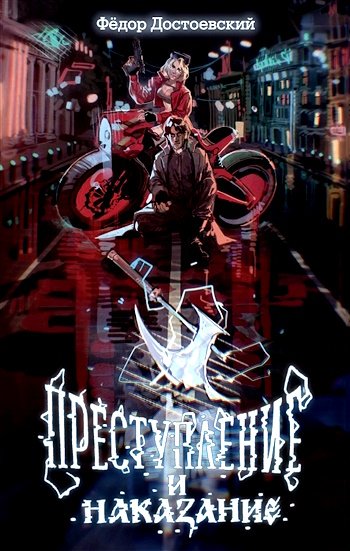Perot brought to NeXT something that was almost as valuable as his $20 million lifeline: He was a quotable, spirited cheerleader for the company, who could lend it an air of credibility among grown-ups. “In terms of a startup company, it’s one that carries the least risk of any I’ve seen in 25 years in the computer industry,” he told the New York Times. “We’ve had some sophisticated people see the hardware—it blew them away. Steve and his whole NeXT team are the darnedest bunch of perfectionists I’ve ever seen.”
Perot also traveled in rarefied social and business circles that complemented Jobs’s own. He took Jobs to a black-tie dinner dance in San Francisco that Gordon and Ann Getty gave for King Juan Carlos I of Spain.
When the king asked Perot whom he should meet, Perot immediately produced Jobs. They were soon engaged in what Perot later described as “electric conversation,” with Jobs animatedly describing the next wave in computing. At the end the king scribbled a note and handed it to Jobs. “What happened?” Perot asked.
Jobs answered, “I sold him a computer.”
These and other stories were incorporated into the mythologized story of Jobs that Perot told wherever he
Steve Jobs by Walter Isaacson 305
went. At a briefing at the National Press Club in Washington, he spun Jobs’s life story into a Texas-size yarn about a young man
so poor he couldn’t afford to go to college, working in his garage at night, playing with computer chips, which was his hobby, and his dad—who looks like a character out of a Norman Rockwell painting—comes in one day and said, “Steve, either make something you can sell or go get a job.” Sixty days later, in a wooden box that his dad made for him, the first Apple computer was created. And this high school graduate literally changed the world.
The one phrase that was true was the one about Paul Jobs’s looking like someone in a Rockwell painting. And perhaps the last phrase, the one about Jobs changing the world. Certainly Perot believed that.
Like Sculley, he saw himself in Jobs. “Steve’s like me,”
Perot told the Washington Post’s David Remnick.
“We’re weird in the same way. We’re soul mates.”
Gates and NeXT
Bill Gates was not a soul mate. Jobs had convinced him to produce software applications for the Macintosh, which had turned out to be hugely profitable for Microsoft. But Gates was one person who was resistant to Jobs’s reality distortion field, and as a result he decided not to create software tailored for the NeXT
platform. Gates went to California to get periodic demonstrations, but each time he came away unimpressed. “The Macintosh was truly unique, but I personally don’t understand what is so unique about Steve’s new computer,” he told Fortune.
Part of the problem was that the rival titans were congenitally unable to be deferential to each other.
When Gates made his first visit to NeXT’s Palo Alto headquarters, in the summer of 1987, Jobs kept him waiting for a half hour in the lobby, even though Gates
Steve Jobs by Walter Isaacson 306
could see through the glass walls that Jobs was walking around having casual conversations. “I’d gone down to NeXT and I had the Odwalla, the most expensive carrot juice, and I’d never seen tech offices so lavish,” Gates recalled, shaking his head with just a hint of a smile. “And Steve comes a half hour late to the meeting.”
Jobs’s sales pitch, according to Gates, was simple.
“We did the Mac together,” Jobs said. “How did that work for you? Very well. Now, we’re going to do this together and this is going to be great.”
But Gates was brutal to Jobs, just as Jobs could be to others. “This machine is crap,” he said. “The optical disk has too low latency, the fucking case is too expensive. This thing is ridiculous.” He decided then, and reaffirmed on each subsequent visit, that it made no sense for Microsoft to divert resources from other projects to develop applications for NeXT. Worse yet, he repeatedly said so publicly, which made others less likely to spend time developing for NeXT. “Develop for it? I’ll piss on it,” he told InfoWorld.
When they happened to meet in the hallway at a conference, Jobs started berating Gates for his refusal to do software for NeXT. “When you get a market, I will consider it,” Gates replied. Jobs got angry. “It was a screaming battle, right in front of everybody,” recalled Adele Goldberg, the Xerox PARC engineer. Jobs insisted that NeXT was the next wave of computing.
Gates, as he often did, got more expressionless as Jobs got more heated. He finally just shook his head and walked away.
Beneath their personal rivalry—and occasional grudging respect—was their basic philosophical difference. Jobs believed in an end-to-end integration of hardware and software, which led him to build a machine that was not compatible with others. Gates
Steve Jobs by Walter Isaacson 307
believed in, and profited from, a world in which different companies made machines that were compatible with one another; their hardware ran a standard operating system (Microsoft’s Windows) and could all use the same software apps (such as Microsoft’s Word and Excel). “His product comes with an interesting feature called incompatibility,” Gates told the Washington Post.
“It doesn’t run any of the existing software. It’s a super-nice computer. I don’t think if I went out to design an incompatible computer I would have done as well as he did.”
At a forum in Cambridge, Massachusetts, in 1989, Jobs and Gates appeared sequentially, laying out their competing worldviews. Jobs spoke about how new waves come along in the computer industry every few years. Macintosh had launched a revolutionary new approach with the graphical interface; now NeXT was doing it with object-oriented programming tied to a powerful new machine based on an optical disk. Every major software vendor realized they had to be part of this new wave, he said, “except Microsoft.” When Gates came up, he reiterated his belief that Jobs’s end-to-end control of the software and the hardware was destined for failure, just as Apple had failed in competing against the Microsoft Windows standard. “The hardware market and the software market are separate,” he said. When asked about the great design that could come from Jobs’s approach, Gates gestured to the NeXT prototype that was still sitting onstage and sneered, “If you want black, I’ll get you a can of paint.”
IBM
Jobs came up with a brilliant jujitsu maneuver against Gates, one that could have changed the balance of power in the computer industry forever. It required Jobs to do two things that were against his nature: licensing out his software to another hardware
Steve Jobs by Walter Isaacson 308
maker and getting into bed with IBM. He had a pragmatic streak, albeit a tiny one, so he was able to overcome his reluctance. But his heart was never fully in it, which is why the alliance would turn out to be short-lived.
It began at a party, a truly memorable one, for the seventieth birthday of the Washington Post publisher Katharine Graham in June 1987 in Washington. Six hundred guests attended, including President Ronald Reagan. Jobs flew in from California and IBM’s chairman John Akers from New York. It was the first time they had met. Jobs took the opportunity to badmouth Microsoft and attempt to wean IBM from using its Windows operating system. “I couldn’t resist telling him I thought IBM was taking a giant gamble betting its entire software strategy on Microsoft, because I didn’t think its software was very good,” Jobs recalled.
To Jobs’s delight, Akers replied, “How would you like to help us?” Within a few weeks Jobs showed up at IBM’s Armonk, New York, headquarters with his software engineer Bud Tribble. They put on a demo of NeXT, which impressed the IBM engineers. Of particular significance was NeXTSTEP, the machine’s object-oriented operating system. “NeXTSTEP took care of a lot of trivial programming chores that slow down the software development process,” said Andrew Heller, the general manager of IBM’s workstation unit, who was so impressed by Jobs that he named his newborn son Steve.
The negotiations lasted into 1988, with Jobs becoming prickly over tiny details. He would stalk out of meetings over disagreements about colors or design, only to be calmed down by Tribble or Lewin. He didn’t seem to know which frightened him more, IBM or Microsoft. In April Perot decided to play host for a mediating session at his Dallas headquarters, and a
Steve Jobs by Walter Isaacson 309
deal was struck: IBM would license the current version of the NeXTSTEP software, and if the managers liked it, they would use it on some of their workstations. IBM
sent to Palo Alto a 125-page contract. Jobs tossed it down without reading it. “You don’t get it,” he said as he walked out of the room. He demanded a simpler contract of only a few pages, which he got within a week.
Jobs wanted to keep the arrangement secret from Bill Gates until the big unveiling of the NeXT computer, scheduled for October. But IBM insisted on being forthcoming. Gates was furious. He realized this could wean IBM off its dependence on Microsoft operating systems. “NeXTSTEP isn’t compatible with anything,”

























